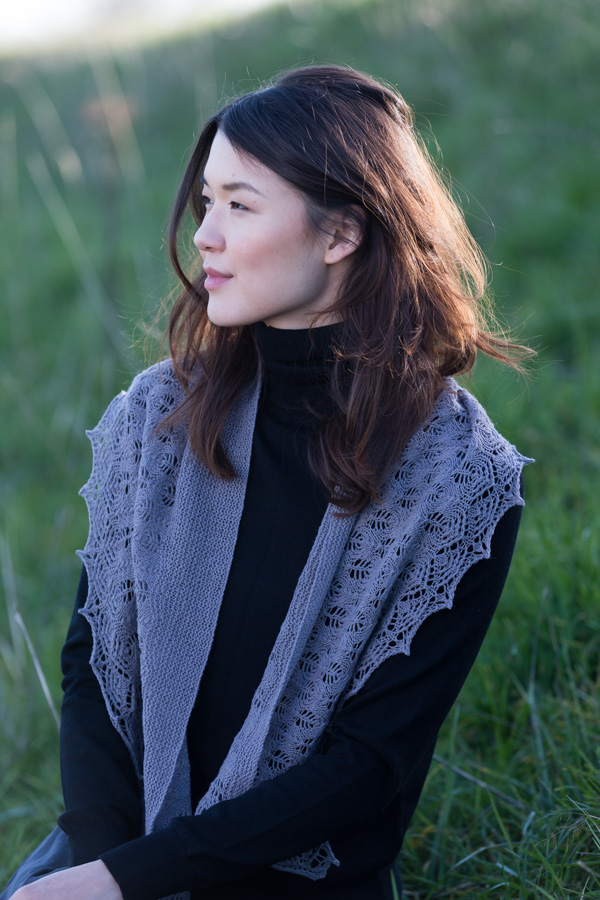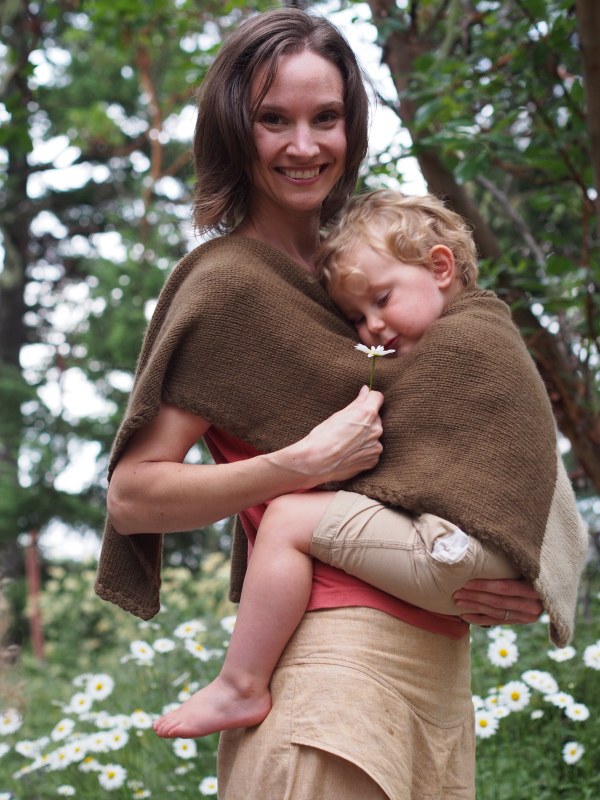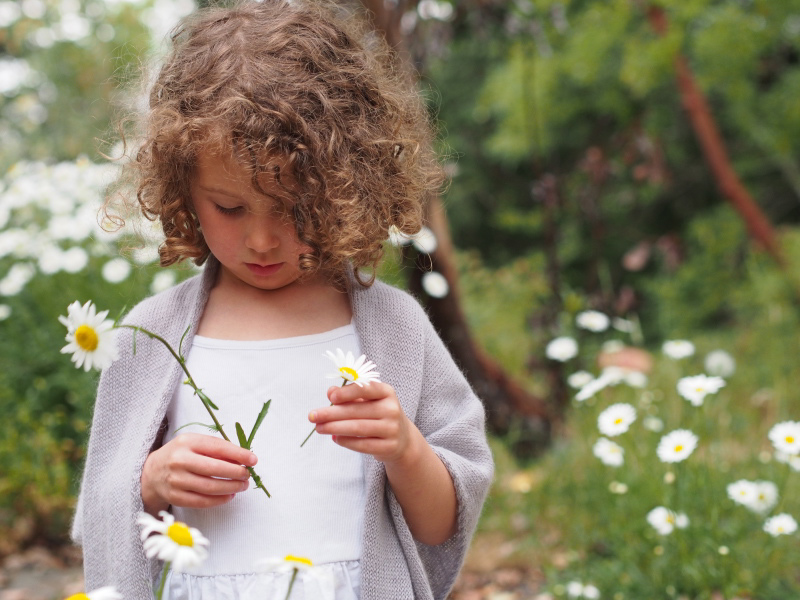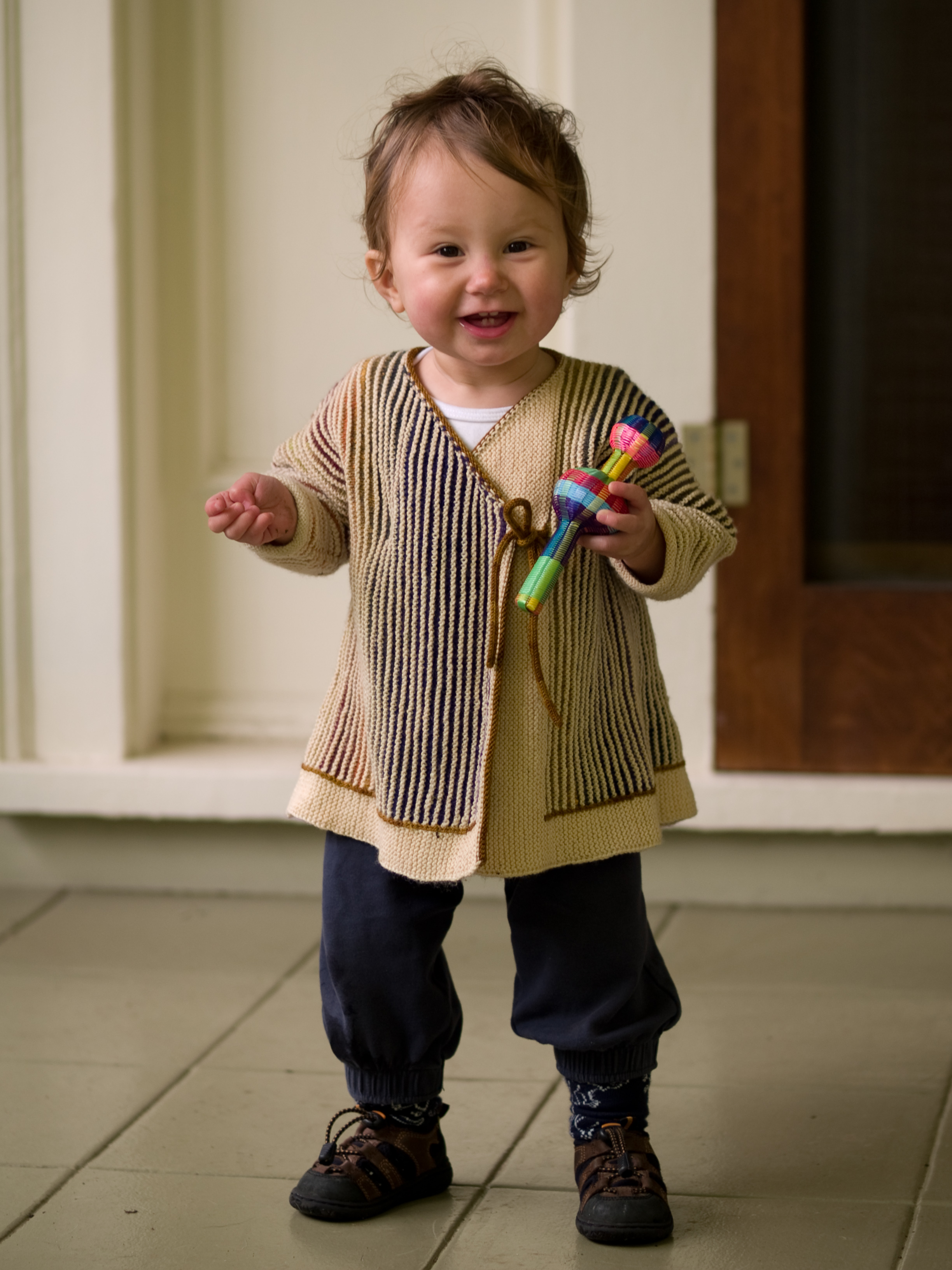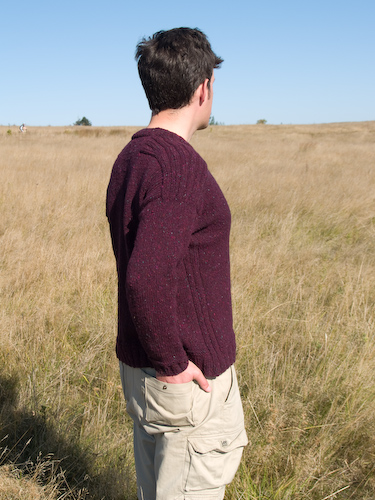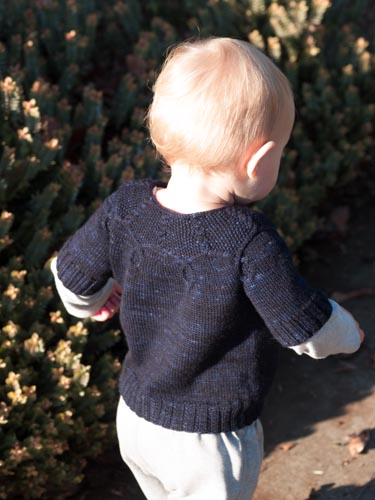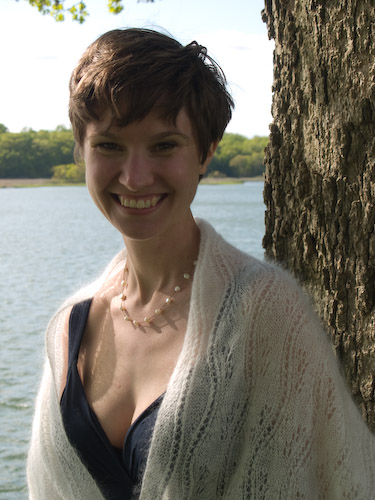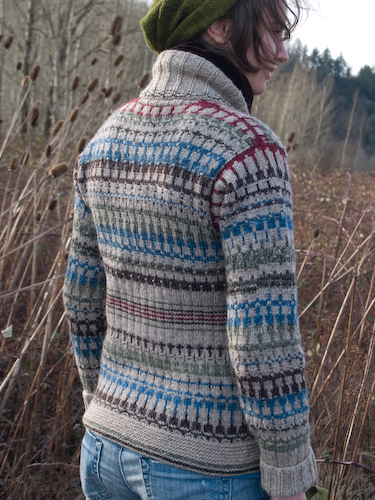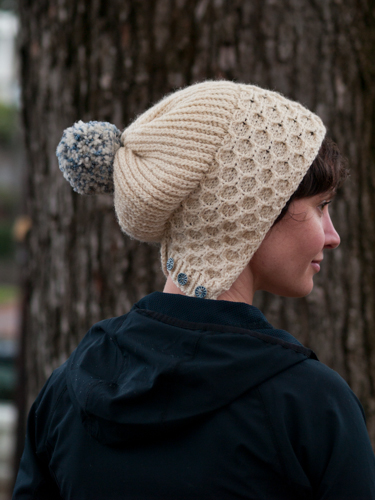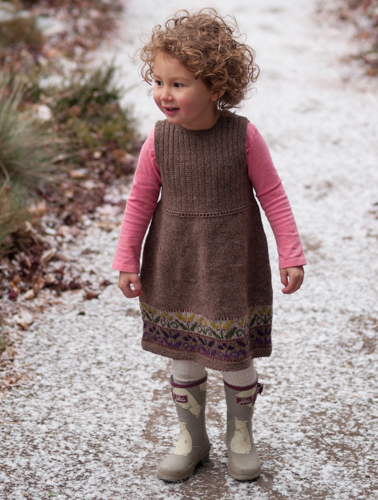Wearing my Brooklyn Tweed Copywriter hat, I had the pleasure of interviewing five of the Wool People designers for the BT blog. All are first-time contributors to Wool People and it was interesting to learn more about their designs and their various points of entry into the knitting world. Since Haro was my second WP design, I didn’t interview myself for the feature, but then I thought it might be fun to answer my own questions anyway!
What’s your favorite detail of your WP10 design contribution?
I think I’m going to have to go with the way the Fir Cone lace pulls the final ridges of garter stitch into gentle waves. You can just see it in Jared’s photo below:
A close second is the way you can subtly change the look of the edging depending on where you pin it. I opted to pull out the little details between the tree forms; they actually look even more tree-ish if you pin the bases of the “trunks,” but I decided I liked the more abstract effect. Try your swatch both ways!
Any interesting techniques in the design you’d like to tell knitters about?
The cabled cast-on is often dismissed in favor of fancier and stretchier options, but sometimes you want a good firm edge—especially against garter stitch, which will totally man-spread if you give it a stretchy cast-on. In this case, the cabled cast-on really helps the shawl hold a crescent form. It’s easy to work and the slender, rope-like roll it produces looks particularly classy as a base for garter fabric.
What’s your favorite place to knit?
Oooo, let’s get personal. I knit absolutely everywhere—waiting rooms, faculty meeting, red lights—if I don’t have at least a sock in my handbag I feel naked. I knit in bed with Masterpiece Mystery! a lot after my kids go to sleep. (I should start a series of designs inspired by English detectives, I really should. I can’t believe I let Amy Herzog beat me to a sweater named for DCS Christopher Foyle. Though I’m strongly considering that sweater for my Tour de France project, if I can only choose between the pullover and cardigan versions.) My favorite, though, has to be the kind of knitting I did last night: on the porch swing on a warm but breezy summer evening, with a Hendricks G&T + cucumber spears and a knitting sister for mellow company.
Who inspired you to start designing knitwear?
I think the itch to depart from the beaten path is innate. Almost as soon as I could knit I was tinkering with other people’s patterns to see what would happen if I altered one detail or another. Mothers of the revolution like Elizabeth Zimmermann and historians like Priscilla Gibson-Roberts piqued my interest in the wide variety of possibilities for sweater construction and gave me the confidence run the basic math to figure things out myself. Coming into knitting just as independent designers were beginning to use the internet to sell their designs directly was wonderful, too—the more I see, the more I imagine. I love following other designers’ processes and seeing their careers blossom. And I’ve never been to school for fashion or design, so everything I’ve learned about fit and construction has been from knitting other people’s patterns. I have such appreciation for designers like Ysolda Teague and Amy Herzog, who go to such painstaking mathematical lengths to write patterns we’ll all enjoy wearing as much as we’ve enjoyed knitting them.
